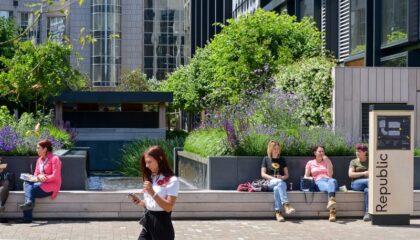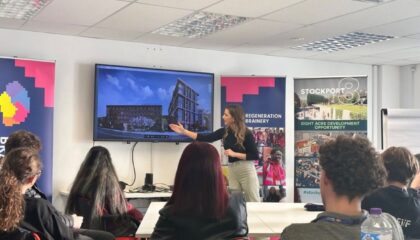THE WORKMAN PROJECT MANAGEMENT BTR SERIES 04
BTR development monitoring: How funds & developers can maximise returns
The newest residential asset class, build-to-rent (BTR), has captured the minds and funds of many investors. A growing number of institutions are shifting towards developer-led schemes. With new opportunities come new risks, new partnerships and new ways of working.
To reap the rewards smoothly, a new kind of development monitoring is required. A more collaborative approach allows funds to mitigate risk and follow their approval processes. At the same time, they can benefit from the typically more dynamic developer approach.
Institutional funds need a development monitoring partner who understands their internal processes and risk requirements. They must also have a strong grasp of how developments work and where investors can take a commercial view.
The new face of development monitoring provides the expertise to navigate BTR investment and oversee development. It ensures all parties reach their goals based on their requirements, perspectives, risk appetite and position within the capital stack.
How development monitoring supports developer agility
Although the perhaps unfamiliar step of partnering with developers can sometimes seem a challenging step for funds, with the right development monitoring partner, this process can be made seamless. Problems are solved through effective communication, with both parties learning along the way.
Most funds purchase sites with planning approval in place. It’s essential to determine if the approval is implementable. A key part of the monitoring process is ensuring that all conditions are properly discharged and documented. The acquisition process for new sites involves assessing aspects such as ecology, invasive species, site contamination, flood risk and site utilities.
Where specific planning requirements are in place for a particular cleared site, for example, an institutional fund may look to exceed the standards set, especially in an area such Net Zero carbon, in order to protect the value of the asset going forward due to the inherent value attributed to achieving Net Zero carbon.
Why collaboration is key in BTR development monitoring
Workman Project Management has experience in development monitoring for the BTR sector, with schemes ranging from 150 to 450 beds. The contract values range from £30m to £100m. The total capital volume of their BTR development monitoring schemes is £600m. This expertise enables the team to understand the value of a collaborative, communicative approach, which prevents misinterpretation and loss of trust.
A progressive, collaborative style of development monitoring ensures that the goals of the institutional fund are met. It also maximises the speed, agility and creativity of the developer. Workman Project Management collaborates with legal specialists to document technical and procurement aspects, including legal agreements, change management, practical completion, rail lines, wind, fire issues, acoustics, cladding specifications, micro-climates, and rights of light in tower projects.
Longevity is also a key consideration, since many investments involve capital going into projects from which a long-term return is planned. In some cases, a developer may consider options such as windows that carry a ten-year lifespan, whereas an institutional fund requires a lifespan of double that. Plus, different investor criteria mean the drivers are different according to each project. Consequently, the new role of development monitoring is to become a bridge, to facilitate more informed investment decisions.
Balancing risk and opportunity in BTR investments
The key is to draw a balance between the institutional standards that an investor requires, with the agility that developers are able to offer. The most effective development monitors are those who are analytical, rigorous and well-equipped to navigate a common path, meeting everyone’s requirements and safeguarding a bright BTR future for all.
By Ben Kearns, Workman Project Management
Read more about our intelligent building technology IBOS
Read more about our ESG services



